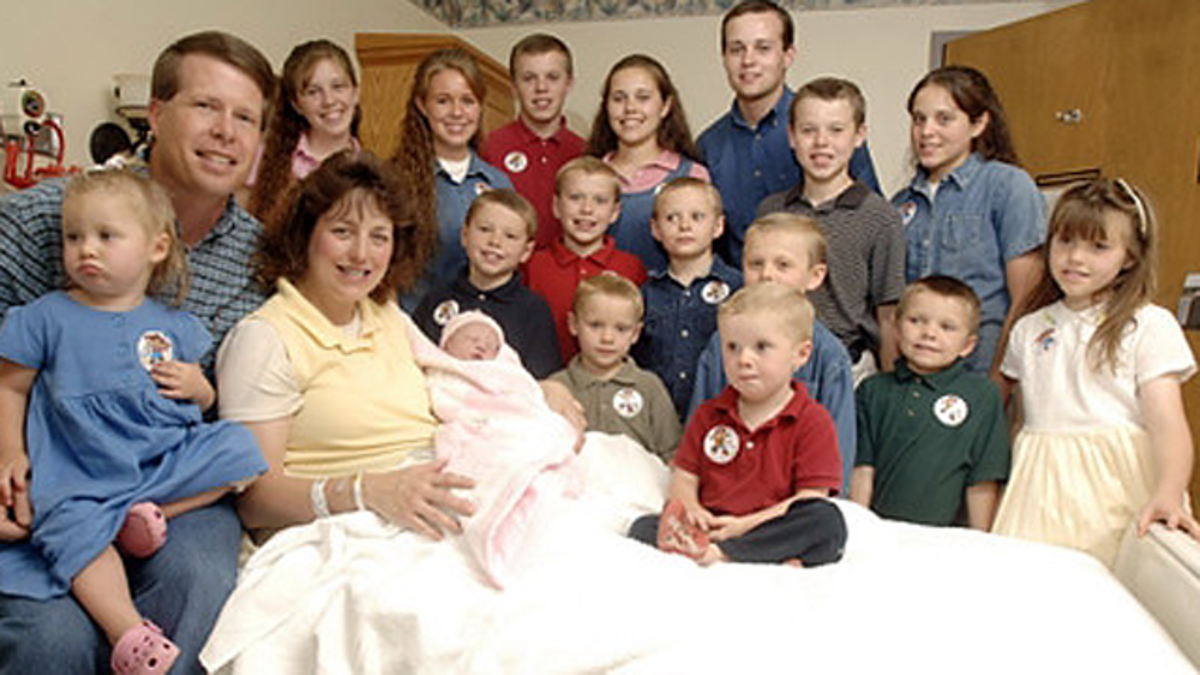
The Duggar Family (AP)
Michelle Duggar's pregnancy with her 20th child is not only jaw-dropping; it is also risky, according to experts.
Duggar, who appears with her husband Jim Bob on the reality TV show "19 Kids and Counting," had a life-threatening experience with her last baby, Josie, who had to be delivered three and a half months early, weighing only 1 lb., 6 oz, according to news reports.
"The more pregnancies one has, the greater the risk of a bad outcome that could leave the children that are already born without a mother," said Dr. Philip Darney, director of the Bixby Center for Global Reproductive Health at the University of California, San Francisco.
Worldwide, he said, as the number of births per women increase, so does the rate of maternal or neonatal death.
Duggar long ago earned a spot in the category doctors have created for women who have had many children. Women achieve what is called grand multiparity when they give birth at least five times, and, for these women, additional pregnancies bring special risks. [11 Big Fat Pregnancy Myths]
Doctors worry most that these women will hemorrhage after delivery, and doctors won't be able to get the uterus to contract to stop the bleeding, said Dr. Lois Brustman, an associate professor of clinical obstetrics and gynecology at Columbia University.
A woman's uterus, the organ within which the fetus develops, is a muscle, and each successive pregnancy stretches that muscle. As a result, after a woman has had many pregnancies, the muscle has a hard time contracting after the placenta — the organ that connects the fetus to the mother's blood supply — separates, Brustman said. This creates a risk of massive bleeding. Because the uterus has been weakened by successive pregnancies, drugs to cause this contraction are typically less successful, she said.
Scar tissue from past pregnancies within the uterus can cause problems with the placenta. This can create additional risks, including premature birth, according to Brustman.
Duggar is 45, and her age also brings increased risk of health problems during pregnancy, including hypertension, diabetes and preeclampsia, a condition unique to pregnancy that involves hypertension and protein in the urine, Brustman said. Duggar suffered from preeclampsia during her most recent pregnancy, according to news reports.
Her age also brings risk of chromosomal anomalies — a type of genetic problem — which can cause Down syndrome, miscarriages and other issues. This risk increases dramatically as a woman ages.
So is there a maximum number of pregnancies a woman's body can sustain? In her practice, Brustman has helped women deliver as many as 12 babies, but, she said, "I am not sure the uterus has a limit."
A woman can typically conceive about two months after giving birth. Regular breastfeeding can also act as a temporary form of birth control, she said.
Among Hutterites, a North American Christian religious group whose members do not practice birth control but accept modern medicine, the median number of births per woman was 13, according to Darney. Because a median represents the number in the middle of a distribution, this means that some women are having more than 13, he said.
This number demonstrates women's reproductive capacity under ideal conditions, he said. "That doesn't mean that having 13 children is the way to achieve the best possible pregnancy outcome and that it is without hazard."
- 5 Myths About Women's Bodies
- Blossoming Body: 8 Odd Changes That Happen During Pregnancy
- The History and Future of Birth Control
Copyright 2011 LiveScience, a TechMediaNetwork company. All rights reserved. This material may not be published, broadcast, rewritten or redistributed.
